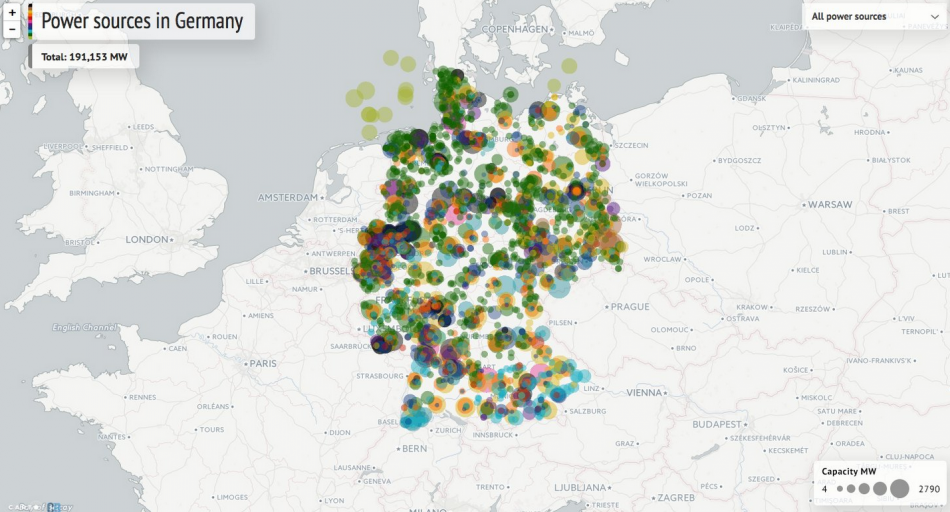Utilities evade fuel rod tax - media / Hydrogen train for Germany
Süddeutsche Zeitung
Large utilities operating nuclear power plants are trying to exchange as few fuel rods as possible this year to circumvent the fuel rod tax that runs out at the end of 2016, writes Michael Bauchmüller in Süddeutsche Zeitung. “To save money, the energy companies in Germany delay substituting fuel elements until the turn of the year,” writes Bauchmüller. The nuclear fuel rod tax charges the use of nuclear fuels for power production. NGOs have called for the extension of the tax beyond 2016, but nuclear power plant operators argue that this would render the plants unprofitable, according to Bauchmüller.
Read the article in German here.
Also read CLEW's background dossier The challenges of Germany’s nuclear phase-out.
Die Welt / BMVI
The world’s first long-distance, hydrogen-oxygen fuel cell-propelled train in batch production will be in operation on German tracks by 2017, writes Nikolaus Doll in Die Welt. French rail transport company Alstom today presents its ‘Corodia iLint’ model that was developed and manufactured in Germany and is slated to run on a northern German route from December 2017 on. The hydrogen stored in a tank on the train’s rooftop allows for 600-800 kilometres (km) of travel at a maximum speed of 140 km/h. The Federal transport ministry (BMVI) supported the project with 8 million euros, the ministry writes in a separate press release,
Read the article in German here and the BMVI press release in German here.
For background read the CLEW dossier The energy transition and Germany’s transport sector.
The Carbon Brief
The Carbon brief published an interactive map on power generating capacity in Germany as well as a series of charts that show how the coal problem reveals the challenge of decarbonising heat, transport and industry in the country. The map and an accompanying article are available both in English and German.
Find the map and article in English here and in German here.
For more information on the country's power mix read the CLEW factsheet Germany’s energy consumption and power mix in charts.
Handelsblatt
Petrol stations have to “radically change” to cope with the transition to a more efficient and possibly largely electric transport system, write Franz Hubik and Regine Palm in Handelsblatt. Petrol stations could become mobility stations offering cars, bicycles and other modes of transport to share, rent, exchange or clean, Thomas Schlick, mobility expert at Roland Berger, told the newspaper. The biggest threat could be autonomous driving, “because if the people don’t have to be there physically anymore, the best offers around the petrol pump are of little benefit – nobody will use them,” write Hubik and Palm.
Read the article in German here.
German Wind Energy Association
Due to objections by Germany's National Meteorological Service (DWD), 219 wind power turbines with a total capacity of 649 megawatts could not be built in 2015 because of the risk of interference with the weather service’s data collection, says the German Wind Energy Association (BWE) in a press release. The deciding question in many relevant court cases was whether the DWD could reasonably be expected to subtract the wind turbine locations in their calculations and fill the gaps through interpolation, says BWE.
Read the press release in German here.
Dual Citizen LLC
While Germany is perceived by experts to be the world’s top green economy performer, the country comes in fifth for its actual performance, according to development and green growth communications consultancy Dual Citizen LLC. The consultancy’s 5th Global Green Economy Index compares how countries perform in the global green economy with how experts rank this performance. “As a developed economy, Germany’s next challenge is to translate this strong foundation to consistent declines year-over-year in the carbon intensity of its economy, an outcome that has not yet been observed there,” says the report.
Find the report in English here.


